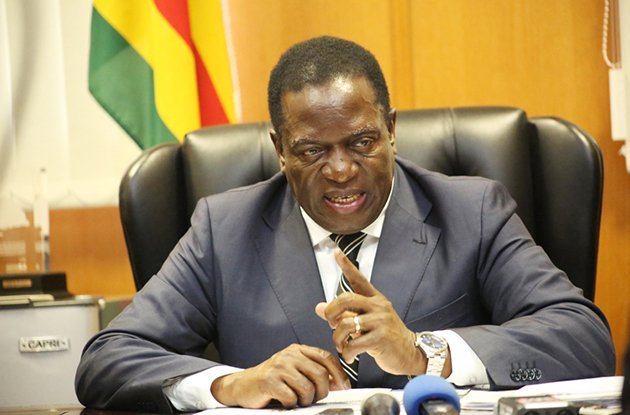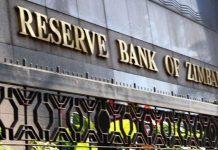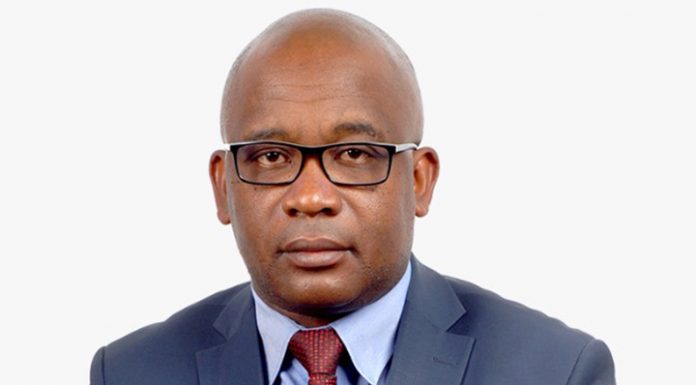Samuel Mapuranga
Various economists believed that independent Zimbabwe was an economic success on route to attaining status of the most “developed country” in Africa. Before 2000, Zimbabwe had a market economy with a fairly solid industrial structure. The macroeconomic situation in the country was rather satisfactory. It had manageable inflation and there were no major inflationary pressures. Shortages were not so frequent and monetary overhang was smaller. However, by 2003 the Zimbabwean economy was shrinking faster than any other economy in the world at 18 percent per year.
Nonetheless, potential for growth remains huge, but barriers look almost insurmountable at this point. When President Mnangagwa appointed Mthuli Ncube as Finance Minister, the goal was to move the economy from a relatively inefficient, centrally planned system, marked by a lack of incentives and a distorted structure of prices and quantity allocations, to a more efficient, market-oriented system based on competitive forces. Additional measures were to contribute to the dismantling of ‘state paternalism’ and the institutions of the communist system, including the reduction of state subsidies. In October 2018, Ncube announced a cocktail of measures anchored on reforms aimed at stimulating the economy after years of stagnation. ألعاب تربح أموال حقيقية 2023 His main aim was to create supportive macroeconomic policies in order to achieve sustainable and inclusive growth.
Transition: Austerity for Prosperity
When Ncube announced austerity measures under the Transitional Stabilisation Programme (TSP) in October 2018 to spur stalling growth, the former African Development Bank chief had plans to cut the wages for the President, Ministers and senior government officials by 5 percent. Buoyant with hope, many Zimbabweans imagined a brighter 2019/2020 with the optimism that by the end of these measures, the country will start experiencing economic growth.
In addition to the cost-cutting measures, Ncube introduced a 2 percent tax on intermediated financial transactions to shore up government coffers. Little did many realize that tightening of the fiscal space amid the huge tax burden has negative redistribution effects on the economy. Although austerity is considered as a ray of hope for economic stabilisation, many who lived through the stringent economic diet of the Economic Structural Adjustment Program (ESAP) era were sceptical that history might repeat itself. ESAP left the Zimbabwe economy worse off, further marginalizing the poor and vulnerable groups.
In the first days of TSP implementation, the economy witnessed massive macroeconomic recession manifesting through rising inflation and macroeconomic distortions fuelled by the mythical 1:1 exchange rate between the Bond Note and United States Dollar. In July 2019, Ncube suspended the publication of annual inflation figures until February 2020 citing currency mismatch. In February 2019, the ZimDollar was trading $2.50 to the US$ when it was re-introduced as the RTGS Dollar but, has fallen to Z$16.68 on interbank and Z$21-24 on parallel market. The ZimDollar lost 80 percent of its value triggering a sharp increase in prices of commodities and severe shortages of essentials. The economic downward spiral has been years in the making. In the year to come, Ncube will seek to maintain his approach in an effort to industrialize the economy through the Latin-American Approach of import substitution. However, Ncube has to tread carefully, he no longer has the luxury of time.
Progress on structural reform and policies to reduce poverty has been limited
It’s been two years since the late former President Robert Mugabe was ousted in a military coup, but the country is yet to taste democracy and economic benefits. Zimbabwe struggles with issues including costly political corruption, hyperinflation and policy uncertainty. Non-competitive practices, privileged access, and costly bureaucratic procedures impeding growth of the country’s agriculture and contribute to high margins in domestic prices. The situation has been exacerbated by adverse weather conditions. Public spending is high in relation to national income, but with limited provision for the social sectors.
Ncube unveiled a Z$63.6 billion expenditure budget with revenue of Z$58.6 billion and a deficit of approximately 1.5 percent of GDP likely to be financed through borrowing in November. The 2020 National Budget Statement announced under the theme; “gearing towards productivity, growth and job creation” sought to align monetary policy to fiscal policy. Centred on managing expenditure with support from non-inflationary financing, Ncube announced a cut in value added tax (VAT) to 14.5 percent in a bid to increase consumer demand. The budget further sought to consolidate progress towards macroeconomic stability by targeting a further reduction in inflation to a single digit figure. But many economists expect Zimbabwe’s consumer price inflation however, to accelerate in 2020. Government projections seem ambitious in light of inherent structural vulnerabilities and associated deficit funding needs which threaten monetary policy stability. In 2019, while investors were looking for certainty and bold strokes to usher in revival, uncertainty and vulnerabilities treaded high widening cracks in the economy.
Subsidies create distortions and a huge burden on fiscus, hence Ncube’s plans to remove subsidies served as a measure to lessen vulnerabilities substantially. In order to improve macroeconomic prospect, Ncube tried to make painful cuts and revive the ailing economy through the removal of subsidies on grain, however he was soon sent back to the drawing board. The work to stabilize the economy isn’t over despite an end to austerity period. Continuing economic reforms could bode well for the future, however.
Reforms are necessary to avoid the abyss again in the economy
There are two possible readings of the current situation in the economy. The first is to focus on the fact that we have weathered an existential crisis and come out stronger. The alternative reading suggests that despite putting in place significant reforms which helped defuse the crisis, nothing much has happened in the last 12 months. The institutional architecture need to enhance economic recovery and growth remains frozen in its current state. Macroeconomic fundamentals have deteriorated further under President Mnangagwa’s administration and democracy deficits widened. To cap it all, policy makers have lost momentum on reform. By doing so, we are not prepared for the next crisis.
Extreme poverty is estimated to have risen from 29 percent in 2018 to 34 percent in 2019, an increase in 4.7 to 5.7 million people according to the World Bank. This was caused by economic contraction and the sharp rise in prices of food and basic commodities. Contraction of agricultural production was heightened by adverse weather conditions, worsening the rural situation in most parts of the country. Drought has plunged millions of Zimbabweans into darkness. The drought has also led to broader impact on the electricity and water sectors, causing widespread rationing and tariff adjustments to manage costs. Even with high prices, the power deficits experienced in Zimbabwe won’t disappear overnight. اسرار لعبة الضومنة Rolling electricity blackouts lasting 18 hours have choked the economy.
The International Monetary Fund (IMF) forecasts that real gross domestic product (GDP) is expected to contract by 7.1 percent in 2019. Foreign currency shortages, severe drought and Cyclone Idai dampened economic activity, especially in mining and agriculture, which experienced double digit declines. Production of major minerals like gold, diamond and coal fell by more than 27 percent while production of maize, the main staple food, was less than half of its level in 2018, resulting in widespread food security. Zimbabwe’s on-going power shortages will slow any recovery prospects.
Deteriorating economic conditions eroded consumer earning which in turn negatively impacted sales volume. Triple digit inflation and a weak exchange rate exerted pressure on profit and operating margins. Domestic demand weakened significantly as job losses and rapidly increasing inflation eroded disposable incomes of households while fiscal austerity kept government spending very low. Inflation has been increasing since October 2018, driven by monetization of sizable fiscal deficits of the past, price distortions, and local currency depreciation. Annual inflation reached 480 percent in November 2019 (compared to 5.4 in September 2018), despite monthly inflation monthly inflation slowing down to 17.46 percent. According to the Economist Intelligence Unit, the economy will shrink further in 2020 as drought continues to weigh on agricultural and energy production from hydro, and as the ongoing currency and liquidity crisis hampers economic activity across the country.
Trade deficit, weakening imports and the ban of foreign currency use
Adjustments of external accounts was swift with the current account reaching a surplus in the first quarter of 2019 for the first time since 2009. The trade deficit also narrowed significantly imports contracted by 31 percent (year-on-year) on the back of forex liquidity constraints and weak demand. In June, the government instituted Statutory Instrument 142 of 2019 with clearly far reaching effects. This led to the re-birth of the mono currency – the ZimDollar, officially banishing the decade old multicurrency system in effect since 2009. Local currency has continued to depreciate due to low levels of official reserves, constrained access to external financing and limited tools by Central Bank to sterilize the economy. Given the ongoing currency depreciation, inflation is projected to average close to 145 percent in 2020.
While the fiscal deficit is projected to gradually decrease in 2020 and 2021, deficit funding will significantly increase spending to counter the negative impacts of the drought and an upward adjustments of wages. The government has been relying on issuing T-bills to finance its operations. Spending overruns driven by agriculture subsidies and wages for 2019/2020 could further widen the fiscal deficit and exacerbate macroeconomic instability, including the already high inflation.
The nation seems to be stuck in the current conditions. Political windows of opportunity have come and gone, and yet authorities seem to be reverting to traditional stereotypes. The elusive compromise between risk sharing and risk-reduction seems out of reach. In the absence of international support, Zimbabwe macroeconomic challenges may persist and with dwindling reserves, there is a high risk of exchange rate overshooting, contributing to inflationary pressures. More so, social and political pressures could lead to policy slippage, delay macroeconomic stabilization and political reforms. This might jeopardize the reform agenda. Hence faced with all these factors, a slowdown is indeed ahead, but we have the tools and mechanisms to handle it; it is not likely to be a violent asymmetric shock like a decade ago.
Limited progress has been made on structural reform
The state continues to exert a heavy influence in many sectors, while companies with privileged access dominate the small private sector and non-competitive practices are extensive. Privatization appears to have stalled. ألعاب تربح جوائز حقيقية Zimbabwe’s reintroduction of a local currency after 10 years of dollarization, coupled with the removal of subsidies on fuel and electricity, unleashed inflation, triggering frequent and sometimes deadly protests against President Mnangagwa’s government. Against this background, Zimbabwe should adopt measures to streamline bureaucracy, reduce corruption and privileged access to markets, and enhance competition, including through contract enforcement.
“Big Bang” Approach: Economic recovery in three areas would help Zimbabwe achieve its medium-term potential
Amid a gruelling economic environment, a “Bing Bang” approach is needed. This requires intellectual and political commitment to radically breakaway from the past, thus excluding any possibilities of policy reversals. First, macroeconomic policy management should be strengthened with a view to achieving sustainable low inflation. This will require fiscal discipline to avoid procyclical spending as commodities prices vary. Second, further fundamental improvements need to be secured in transparency in relation to fiscal operations, including revenues from diamond and other natural resources, and in removing conflicts of interest in the parastatals especially gold and diamond companies. Third, for the private sector to develop, structural measures are required to improve competition and contract enforcement.
The one certainty in politics at the moment is that it is uncertain. The received wisdom is that political uncertainty is bad news, at least for the economy. Consequently, there is need to fix the roof before the storm hits. Zimbabwe needs to prepare the ground for a restoration of public services and a favorable agricultural and commercial environment. Various economists suggest that uncertainty is indeed a brake on economic activity. Uncertainty measured in various ways tends to be a cause of recessions as well as a consequence. So the problem is real; with the Zimbabwean economy expected to shrink in 2020 uncertainty makes it more profitable to delay investment. Data suggest that private investment in the Zimbabwean private sector is remarkably weak. Policy makers in Zimbabwe need a transition strategy that include a combination of successful macroeconomic stabilization, fast transformation of the economic system, and minimization of the social impact of changes. Key areas for authorities to consider in 2020 and beyond include:
Soft budget constraints: Authorities need to wean current and former state-owned firms from subsidies, whether direct or through the banking sector. This is an imperative of a successful policy package. In some cases, privatization per se does not necessarily lead to superior performance and that privatized firms may still rely on subsidies without adequate restructuring. Legal and institutional framework: A successful transition package requires legal support. The lack of proper legal regulations and institutions that ensure the enforcement of laws can seriously undermine far-reaching and radical economic reforms. This implies that reforms of the judiciary should also be one of the top priorities on the reform agenda. Uncertainty has a stronger and more persistent effect on countries with weaker legal systems.
Macroeconomic policies: Macroeconomic stability is an important condition for long-term growth. Zimbabwe experienced skyrocketing inflation which closed November at 480 percent. Companies struggled with constant price revisions while consumers had to adjust in terms of expenditure. However, inflation can be contained in the presence of robust economic growth. At the same time, excessively restrictive monetary policies can be detrimental and can impede fast catching up with the more advanced economies. Openness: A stabilization policy package based on openness to trade and FDI can have very positive overall effects, not only for the faster integration of a country into wider regional markets, but also because of their broader positive effects on the domestic economy, through increased competition, inflow of capital and knowhow, and spill over effects.
In order to achieve economic recovery and ensure sustainable growth, Zimbabwe’s economic stabilization and reform program needs to be on track. Strong ownership by the authorities and steadfast reform implementation are critical to entrench macroeconomic stability and support robust and balanced growth. The country is in debt distress, however, if the finance minister can hold it together, Zimbabwe will be a star performer over the next four to five years. above all, the long road ahead requires meaningful political and economic reforms in order to attract investors. Investor appetite will pick up when there are meaningful political and economic reforms.











